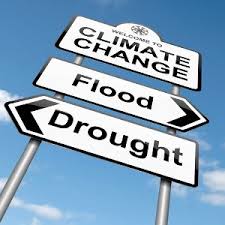Precautionary principle
Cost-Benefit Analysis and Deep Uncertainty
How should agencies take into account “the things we know we don’t know”?
Since 1981, cost-benefit analysis (CBA) has been at the core of the rule making process. OIRA, the so-called “regulatory czar” in the White House, must approve every significant regulation based on a review of its CBA. But CBA has had a major blind spot. It embodies techniques for analyzing possible harmful outcomes when the probability …
Continue reading “Cost-Benefit Analysis and Deep Uncertainty”
CONTINUE READINGUncertainty in the Age of Coronavirus
There’s a lot we don’t know at this point. How should we deal with that?
Knowledge about the coronavirus is limited but growing. In the meantime, how should we cope with this uncertainty? I can’t give you psychological advice, but I can say something about how to think about this uncertainty. How to make decisions under uncertainty is something we know a lot about from the environmental sphere. Uncertainty is …
Continue reading “Uncertainty in the Age of Coronavirus”
CONTINUE READINGThe Shadow Price of Carbon
Merging Cost-Benefit Analysis and Feasibility Analysis
The U.S. government has devoted a lot of time and effort to estimating the social cost of carbon. This is basically a standard exercise in cost-benefit analysis, following a familiar three-step process: 1. Impacts. Figure out the physical impacts of the emissions. This involves setting up some emissions scenarios and then running computer simulations to …
Continue reading “The Shadow Price of Carbon”
CONTINUE READINGBill O’Reilly Adopts the Precautionary Principle
Ann Coulter has written a column arguing that low doses of regulation are actually good for you. Through the so-called hormesis effect, she says, the low doses stimulate the body’s protective mechanisms and actually produce health benefits. She was interviewed by Bill O’Reilly about this. As Huffington reports: She repeated this assertion to a skeptical …
Continue reading “Bill O’Reilly Adopts the Precautionary Principle”
CONTINUE READINGThree New Perspectives on Environmental Issues
Three recent books provide fresh and interesting perspectives on environmental law. The authors all graduated from law school in the past twenty years, and they all have most of their careers ahead of them. All of this augurs well for the future of environmental scholarship. The first book is Doug Kysar’s Regulating from Nowhere. Kysar …
Continue reading “Three New Perspectives on Environmental Issues”
CONTINUE READING“Facing Catastrophe”: A Roadmap to a Safer Future
Rob Verchick’s new book, “Facing Catastrophe: Environmental Action for a Post-Katrina World,” might help avoid future disasters like the Deepsea Horizon blowout. Verchick views wetlands, lakes, forests, and rivers as a kind of infrastructure, providing ecosystem services that are just as important as the services provided by other infrastructure such as roads and dams. For …
Continue reading ““Facing Catastrophe”: A Roadmap to a Safer Future”
CONTINUE READINGNew Approaches to Analyzing Uncertainty
New analytic methods are emerging for dealing with tough problems that are not amenable to conventional risk analysis. These techniques also shed light on the precautionary principle.
CONTINUE READINGClimate Change Lesson #2: Watch Out for Those “Unknown Unknowns”
This is the second in a short series of homilies on the lessons we can learn from climate change. Donald Rumsfeld famously distinguished between knowns, known unknowns, and unknown unknowns. He didn’t take the occasion to provide sharp analytical distinctions, but the difference between known unknowns and unknown unknowns is very much like a difference …
Continue reading “Climate Change Lesson #2: Watch Out for Those “Unknown Unknowns””
CONTINUE READINGSunstein and the Environment
To the dismay of many environmentalists, President Obama has selected Professor Cass Sunstein to head a key department at OMB. This department has been in charge of applying cost-benefit analysis to environmental regulations. For example, the Center for Progressive Regulation (CPR) has issued a report expressing great concern about the selection. According to CPR: …
Continue reading “Sunstein and the Environment”
CONTINUE READING






